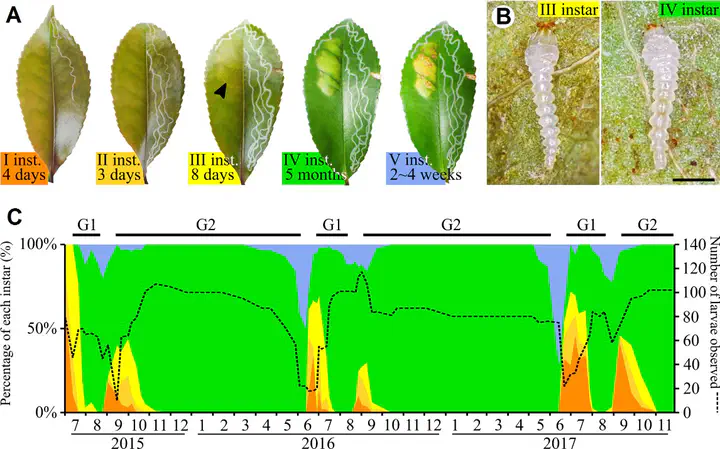Inside the horn of plenty: Leaf-mining micromoth manipulates its host plant to obtain unending food provisioning
 Image credit: [Antoine Guiguet]
Image credit: [Antoine Guiguet]Abstract
Leaves represent the main resource for herbivorous insects and their performances are mainly a function of leaf nutritional quality. Two feeding strategies are known to optimize the exploitation of leaf resources, leaf-miners that selectively feed on tissues of high nutritional quality and gall-inducers that induce the development of a new tissue showing an enhanced nutritional value. Some leaf-miners are known to also manipulate their nutritional environment, but do not affect plant development. Cases of callus proliferation in leaf-mines have been reported, however, the direct role of the insect in the formation of additional plant cells and the nutritional function of this tissue have never been established. Using an experimental approach, we show that leaf-mining larvae of micromoth, Borboryctis euryae (Lepidoptera, Gracillariidae), that grow on Eurya japonica (Pentaphylacaceae), actively induce callus proliferation within their leaf-mine at the fourth instar. We experimentally demonstrated that, at this developmental stage, the larva feeds exclusively on this newly formed tissue and feeding of the tissue is essential for completing larval stage. Phenological census revealed considerable expansion and variation of fourth instar duration caused by the continuous production of callus. We propose here the “cornucopia” hypothesis which states that the newly produced callus induced by the leaf-mining larvae provides virtually unending nourishment, which in turn allows flexible larval development time. This represents the first example of a leaf-miner manipulating plant development to its benefit, like a gall-inducer. We propose to name this life style “mine-galler”.